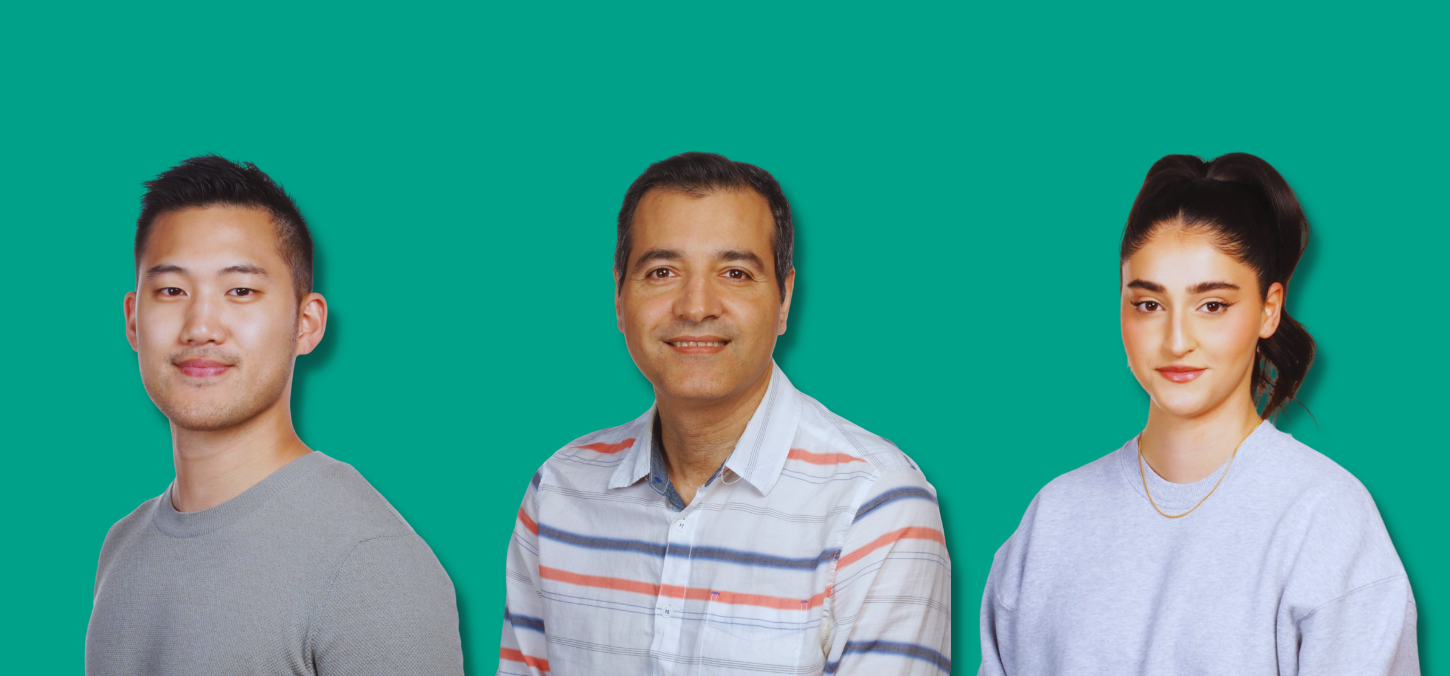
Degrees in innovation
By Suzanne Bowness
Meet three graduate students pushing themselves scientifically and creatively
Students come to the Faculty of Dentistry for an advanced degree for many reasons. Here are three who worked through their master’s of science with an eye to doing something new — and they did.
Artistic perio: Ryan Noh
Even before he looked to becoming a dentist and then a periodontist, Ryan Noh 1T9, 2T2 MSc Perio knew he liked to draw. “I did a lot of arts and crafts when I was growing up,” say Noh, who was raised by artists and was drawn to the artistic and creative side of dentistry.
“Periodontics took that to a different level, because of the meticulous nature of the work. That's why I went into surgery, and part of the reason why I'm working part time as a dental illustrator,” he explains.
Noh’s got into dental illustration by accident, when a colleague asked him a question about a surgical procedure. “Because I'm a visual learner, I drew a picture of how to do the procedure,” says Noh. The colleague suggested he publish it to Instagram.
The more he posted, the more followers wanted to see his work. “I'm almost at 10,000,” says Noh (his handle is @hardpalette). Clinicians and researchers have been reaching out to work with him, attracted by his talent and familiarity with dental topics. “It’s easier and faster for them to work with an illustrator that works in the same field,” he says. These new relationships have resulted in a range of projects. Recently, for instance, he illustrated a textbook for Dentistry professor Douglas Deporter and his work appeared on the front page of Clinical Advances in Periodontics.
Along with keeping busy at his periodontic practice in Waterloo and doing illustration on the side, Noh is now assistant professor, teaching stream, and serves as director of undergraduate periodontics. Having enjoyed his experience as a student, Noh continues to do so as a faculty member. “The people in the periodontics program drew me to this Faculty. I hope I can influence and help others during my time here as well.”
Practical research: Nawfal Al-Hashimi
For Nawfal Al-Hashimi 2T2 MSc Endo, earning a master’s in endodontics was the next step in an already established dental career. He first obtained his dental degree 20 years ago at the University of Baghdad in Iraq, then served as a clinical instructor and completed a master’s in conservative dentistry. He then did a PhD in molecular biology in France, which ignited his passion for research.
After finishing that degree, he emigrated to Canada to join his family, and did postdoctoral work at the Faculty with professor Bernhard Ganss and then requalified as a dentist at the University of Manitoba. He practised as a general dentist for nearly eight years when his love for academic life drew him back. “My passion for school has been there for a long time. So even though I had an established practice, I set off to continue my education.”
For his master’s degree, Al-Hashimi returned to Ganss’ lab to explore regenerative endodontics, and the challenge of regenerating a tooth’s nerve rather than the current practice of removing and replacing it with artificial materials. While the research is in the early stages, his technique to regenerate the nerve shows promising preliminary results.
As well, during his degree, Al-Hashimi worked on developing a new endodontic tool to aid in root canal preparation. With guidance from Ganss, he secured a cross-collaboration with U of T’s Faculty of Applied Science & Engineering, and the instrument is now moving towards prototype. “Maybe this instrument will be more efficient for root canal treatment than previous tools,” he says.
Al-Hashimi has seen how many schools around the world function, and says one thing that impresses him about U of T’s Faculty of Dentistry is the collaborative environment. “It’s one of the best schools for allowing students to work in multiple labs, but all together, so there's always people around to help you with different techniques,” he says.
A materials breakthrough: Nahrain Warda
Dental researchers have a lot of questions about the healing of tissues around implants. They’re difficult to answer, since few staining techniques work on resin-embedded tissue samples, making the healing process difficult to observe under the microscope. Nahrain Warda 2T2 MSc D may have cracked it.
“One of the biggest obstacles in the bone biology field was preparing histological sections that contain titanium implants placed in bone. The technique was always kind of alluded to in the literature, but always disclaimed as something impossible. After countless trial and error, we actually managed to make it work ,” she says of her research in professor John Davies’ lab. Beyond dentistry, the technique can find applications in orthopedic surgery and other fields, too.
Warda chose to study in the Faculty of Dentistry after completing an undergraduate degree in cell and molecular biology because of the presence of dental researchers willing to support her endeavours. “I was surrounded by people who were experts in our field. Anytime I had a question, whether it was dental or biological, I knew I was asking the right people,” she recalls.
Next stop for her: applying to medical school. Like many of the most engaged grads from fall 2022, she’s keen to keep learning.